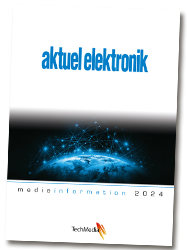by Ryan Damato
Hardware-in-the-Loop
Hardware-in-the-loop (HIL) is a powerful technique that enables the testing and validation of complex systems by integrating real hardware components into a simulation environment. It allows engineers to verify the performance and functionality of a system by emulating real-world conditions and interactions.
One crucial tool in the realm of HIL testing is Digilent’s Analog Discovery Pro (ADP3450) oscilloscope. The ADP3450 is a high-performance oscilloscope renowned for its exceptional accuracy, wide bandwidth, and advanced features. With its precise measurements, extensive triggering capabilities, and intuitive user interface, the ADP3450 plays a pivotal role in capturing and analyzing electronic signals, making it an indispensable instrument in HIL testing and various electronic applications.
In addition to its exceptional accuracy and advanced features, the ADP3450 oscilloscope boasts a new capability that further enhances its versatility in HIL testing and electronic applications. This capability includes the ability to filter an input signal and output it through its signal generator output. This feature empowers engineers to manipulate and shape signals, allowing them to simulate various real-world scenarios and test the response of systems under different conditions. Whether it’s applying specific filters, creating custom waveforms, or generating complex signal patterns, the ADP3450’s signal filtering and generation capabilities open up a wide range of possibilities for precise and comprehensive testing, making it an invaluable tool for engineers and researchers alike. The following video gives an overview of HIL and explains how the ADP3450 will be used to show this new functionality.
The following is an informative video on utilizing the powerful ADP3450 oscilloscope in a Hardware-in-the-Loop (HIL) application. In this demonstration, we will showcase the capabilities of the ADP3450 and its seamless integration with the new Analog Discovery 3 (AD3). The AD3 is a compact yet feature-rich test and measurement device that complements the ADP3450 perfectly. With its compact size, the Analog Discovery 3 offers incredible portability without compromising on functionality. Combined with the WaveForms software, this dynamic duo empowers engineers and researchers to explore, analyze, and manipulate signals with ease. Join us as we dive into the world of HIL testing, leveraging the unmatched capabilities of the ADP3450 and the convenience of the AD3 to achieve accurate and comprehensive results in real-world scenarios.
Industry Applications
Testing designs using HIL offers several advantages, and below are some applications of HIL testing in different fields:
Automotive Industry: HIL testing plays a crucial role in the development and validation of automotive systems. It allows engineers to test electronic control units (ECUs), sensors, actuators, and other components in a controlled environment that replicates real-world conditions. HIL testing enables the evaluation of vehicle dynamics, powertrain systems, braking systems, and overall vehicle behavior.
Aerospace and Defense: HIL testing is extensively used in aerospace and defense industries to verify the performance and reliability of complex avionics systems, flight controls, navigation systems, and communication systems. It enables the simulation of various flight scenarios and environmental conditions, allowing engineers to assess system behavior and ensure safety and accuracy.
Energy Systems: HIL testing is employed in the testing and validation of energy systems, such as power converters, inverters, grid-tied systems, and renewable energy systems. It helps analyze and optimize the behavior of these systems under different load conditions, grid disturbances, and fault scenarios. HIL testing allows engineers to evaluate system stability, efficiency, and response to ensure reliable and safe operation.
Industrial Automation: HIL testing finds applications in the development and testing of industrial automation systems, including programmable logic controllers (PLCs), distributed control systems (DCS), and robotic systems. It enables engineers to validate control algorithms, sensor integration, communication protocols, and overall system performance before deployment, minimizing risks and ensuring proper functionality.
Medical Device Development: HIL testing is utilized in the development and verification of medical devices and healthcare systems. It allows engineers to simulate physiological conditions, patient interactions, and device responses. HIL testing helps evaluate the accuracy, reliability, and safety of medical devices, such as patient monitors, infusion pumps, and imaging systems, ensuring they meet regulatory standards.
Power Electronics: HIL testing is employed in the design and testing of power electronic systems, such as motor drives, electric vehicle charging stations, and renewable energy converters. It enables engineers to assess the performance, stability, and efficiency of these systems under various load conditions, fault scenarios, and grid disturbances. HIL testing helps identify and mitigate potential issues early in the development process.
In summary, HIL testing is a versatile technique used across industries to validate complex systems. Its applications range from automotive and aerospace to energy systems, industrial automation, medical devices, and power electronics. By providing a realistic and controlled testing environment, HIL testing enables engineers to detect and address potential issues, optimize system performance, and ensure reliability and safety. Making use of the ADP’s ability to filter and reroute inputs onto the outputs gives rise the ADP becoming one very useful tool for HIL.


